How To See System Properties In Windows 7
Surround variables in an operating system are values that incorporate information virtually the system environment, and the currently logged in user. They existed in OSes before Windows likewise, such as MS-DOS. Applications or services tin use the information divers by environment variables to decide various things about the OS, for example, to detect the number of processes, the currently logged in user'south name, the folder path to the electric current user'south profile or the temporary files directory. In this article, nosotros volition encounter how to view environment variables divers on your system and their values for the current user, for specific processes and the system variables.
Windows has several types of environs variables: user variables, system variables, process variables and volatile variables. User environment variables are accessible to all apps which run in the electric current user context, system environs variables apply to all users and processes on the PC; process variables are applicative only to a specific procedure and volatile variables are those which be only for the current logon session. Most interesting of these are user, organization and process variables, as we can change them.
How to view user and system environment variables and their values
The most simple way to view the current user variables is to use the Organisation Backdrop.
- Open the Command Panel.
- Navigate to the following applet:
Control Panel\Organisation and Security\System
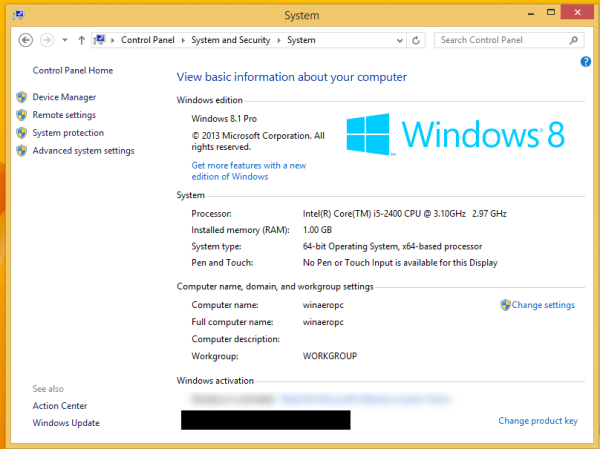
- Click the "Advanced System Settings" link on the left.In the adjacent dialog, you volition come across the Environment Variables... button in the lesser of the Advanced tab. Click it.
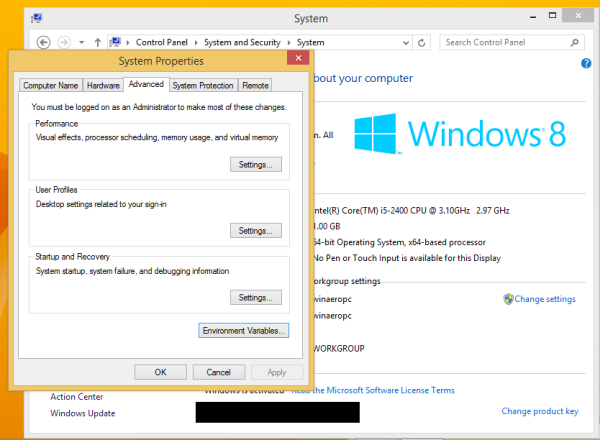
- The Environs Variables window will appear on the screen.
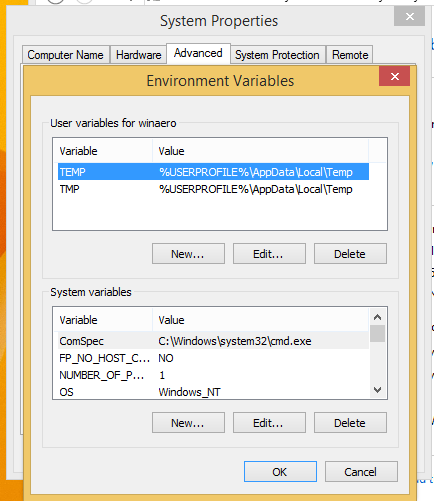
In the upper tabular array, you will see user variables, and the bottom list contains arrangement-broad variables.
Here you can view their names and values or even create your ain variables, or edit the value of some variable if required.
There are several other ways to see environment variables.
Yous can see them at the advisable registry keys.
- Open up Registry Editor.
- To see user variables, go to the following key:
HKEY_CURRENT_USER\Environment
Tip: How to jump to the desired registry central with one click.
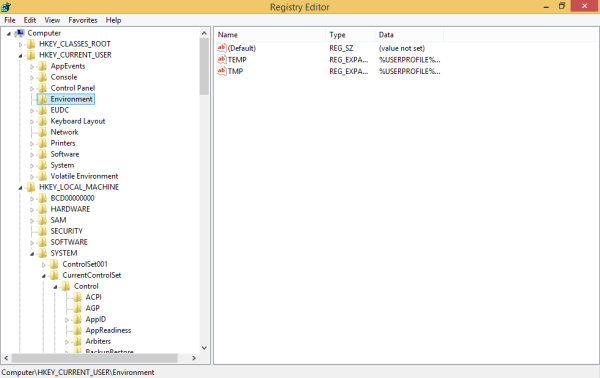
- To meet organisation variables, navigate to the following key:
HKEY_LOCAL_MACHINE\SYSTEM\CurrentControlSet\Control\Session Manager\Environment
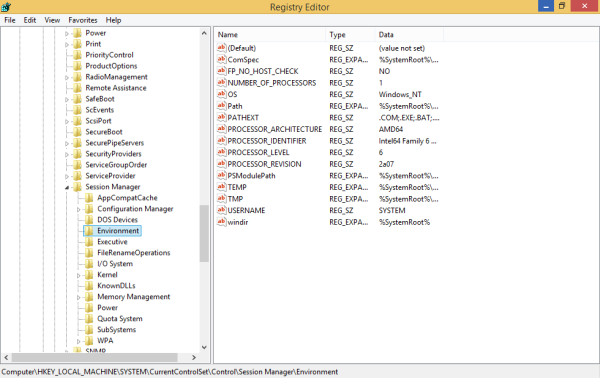
Alternatively, you tin can view environs variables via the command prompt. Open the command prompt window, and type the following control and then press Enter:
set
The ready control will impress all available environs variables with their values, directly into the console output, so you will able to meet them all at once.
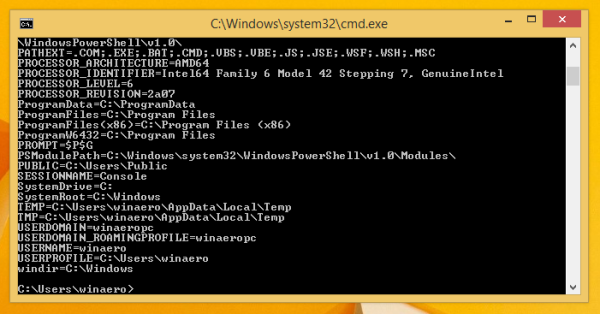
If y'all want to see the value of a specific variable, and so use the repeat control instead of set up, equally follows:
echo %userprofile%
The command to a higher place will print the path to your account profile.

Replace userprofile with the desired proper noun of the variable. For example, repeat %computername%. That'south it.
How to see surround variables for a specific Windows process
Unfortunately, I know no native way (i.due east. without using third party apps) to view variables of some application running in Windows, just the Sysinternals Process Explorer does this perfectly.
- Download Process Explorer and run information technology as Administrator.
- Correct click the procedure that you are interested in and cull "Properties..." from the context bill of fare.
- The properties window for that process will appear on the screen. Switch to the Environment tab and run across the complete set of variables for the selected process. This is very useful.
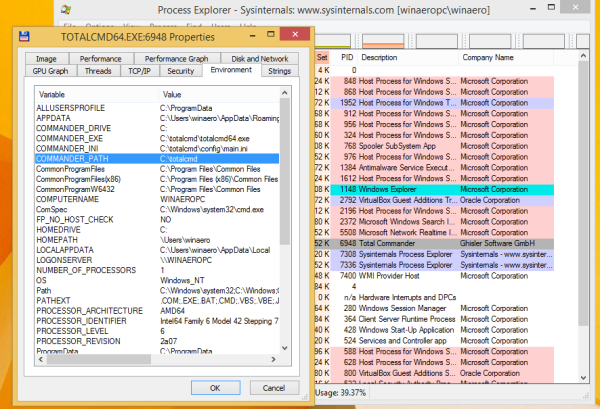
In my screenshot, you can meet the COMMANDER_PATH variable, which is available exclusively for Total Commander (the totalcmd64.exe process). If I type "cd %commander_path%" in Total Commander's command line, it will jump into the directory where information technology is installed.
That's it. Now you lot know all the useful ways to see the names and values of variables divers in your Windows environment.
Support us
Winaero greatly relies on your support. You tin assistance the site keep bringing you lot interesting and useful content and software by using these options:
If you like this article, please share it using the buttons below. It won't take a lot from you, but information technology volition assist us grow. Thanks for your back up!
Source: https://winaero.com/how-to-see-names-and-values-of-environment-variables-in-windows-8-and-windows-7/
Posted by: morgandession.blogspot.com

0 Response to "How To See System Properties In Windows 7"
Post a Comment